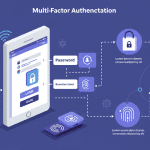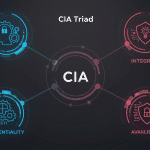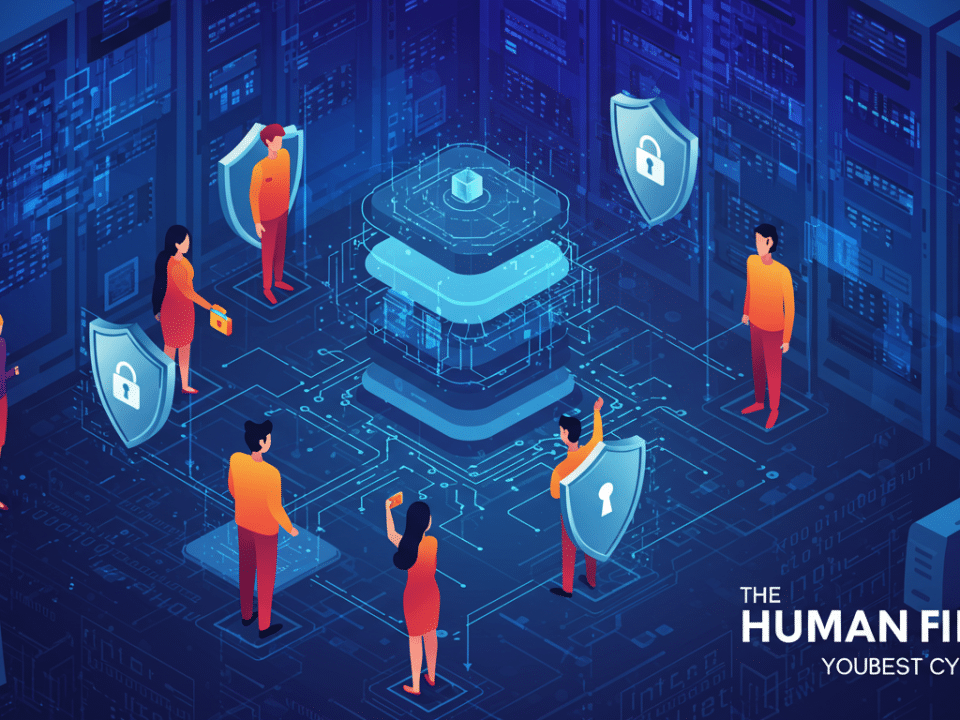
Beyond Passwords: The Power of Multi-Factor Authentication (MFA)
December 29, 2024
The CIA Triad: The Cornerstone of Information Security
January 1, 2025In today’s data-driven world, information is a valuable asset. But this same information can become a major liability if it falls into the wrong hands. Data leakage, the unauthorized transmission or exposure of sensitive data, poses a significant threat to individuals and organizations alike. It can lead to financial losses, reputational damage, legal consequences, and a loss of trust.
As your trusted cybersecurity partner, Krypto IT is committed to helping you understand and mitigate the risks associated with data leakage. This blog post will delve into what data leakage is, how it occurs, and, most importantly, what you can do to prevent it.
What is Data Leakage?
Data leakage is the unauthorized transfer or disclosure of confidential information from within an organization or system to an external recipient. This can happen intentionally or unintentionally, and the leaked data can include anything from personal details and financial records to intellectual property and trade secrets.
Data Leakage vs. Data Breach:
While often used interchangeably, there is a subtle but important difference:
- Data Leakage: Typically involves insiders, either through negligence or malicious intent. The data may not be immediately used for malicious purposes but could be sold or exposed later.
- Data Breach: Usually involves external attackers gaining unauthorized access to a system and stealing data. The intent is often to exploit the data for financial gain or other malicious purposes.
How Does Data Leakage Occur?
Data leakage can occur through various channels, including:
- Unintentional Actions:
- Emailing sensitive information to the wrong recipient.
- Losing or misplacing devices containing sensitive data (laptops, USB drives).
- Improperly disposing of documents containing confidential information.
- Misconfigured cloud storage settings that expose data publicly.
- Software vulnerabilities that allow unauthorized access to data.
- Intentional Actions:
- Disgruntled employees stealing or leaking data for personal gain or revenge.
- Insider threats motivated by financial incentives or coercion.
- Corporate espionage where competitors seek to obtain confidential information.
- External Attacks that can lead to leaks:
- Phishing attacks that trick employees into revealing sensitive information.
- Malware infections that allow attackers to exfiltrate data.
- Social engineering tactics that manipulate individuals into divulging confidential data.
The Consequences of Data Leakage
The consequences of data leakage can be severe and far-reaching:
- Financial Losses: Direct financial losses due to theft, fraud, regulatory fines, and legal fees.
- Reputational Damage: Loss of customer trust and damage to brand image.
- Legal and Regulatory Penalties: Fines and sanctions for non-compliance with data protection regulations (e.g., GDPR, CCPA).
- Operational Disruptions: Disruption to business operations due to data loss or system downtime.
- Competitive Disadvantage: Loss of intellectual property and trade secrets to competitors.
Best Practices, Policies, and Procedures for Preventing Data Leakage
1. Data Loss Prevention (DLP) Technology:
- Implement DLP software: Monitor and control the flow of sensitive data across your network, endpoints, and cloud applications.
- Define DLP rules and policies: Specify what types of data are considered sensitive and what actions should be taken when that data is detected (e.g., block, encrypt, alert).
- Regularly review and update DLP rules: Adapt to evolving threats and changing business needs.
2. Access Control and User Permissions:
- Principle of Least Privilege: Grant users only the minimum access necessary to perform their job duties.
- Strong Authentication: Implement multi-factor authentication (MFA) to verify user identities.
- Regularly review user access rights: Ensure that access permissions are up-to-date and appropriate.
3. Data Encryption:
- Encrypt sensitive data at rest and in transit: Protect data stored on devices, servers, and in the cloud, as well as data transmitted over networks.
- Use strong encryption algorithms: Employ industry-standard encryption algorithms (e.g., AES-256).
- Manage encryption keys securely: Protect encryption keys from unauthorized access.
4. Employee Training and Awareness:
- Security Awareness Training: Educate employees about data leakage risks, common attack vectors (e.g., phishing), and their role in protecting sensitive information.
- Clear Policies and Procedures: Develop and communicate clear policies on data handling, acceptable use of company resources, and incident reporting.
- Promote a Culture of Security: Encourage employees to be vigilant and report any suspicious activity.
5. Device Security:
- Secure Mobile Devices: Implement policies and controls for securing mobile devices that access company data (e.g., strong passwords, remote wipe capabilities).
- Endpoint Protection: Deploy endpoint security software (e.g., antivirus, anti-malware) on all devices.
- Data Loss Prevention on Removable Media: Use a DLP solution to restrict the use of removable media or to encrypt any sensitive information that is stored on them.
6. Secure Disposal of Data:
- Data Sanitization: Implement procedures for securely erasing data from devices before they are disposed of or repurposed.
- Secure Document Disposal: Use shredders or other secure methods to dispose of physical documents containing sensitive information.
7. Regular Audits and Monitoring:
- Security Audits: Conduct regular security audits to assess your organization’s security posture and identify vulnerabilities.
- Log Monitoring: Monitor system logs for suspicious activity that could indicate a data leak.
- Incident Response Plan: Develop and regularly test an incident response plan to address data leakage incidents effectively.
8. Vendor Risk Management:
- Assess Third-Party Security: Evaluate the security practices of vendors and partners who have access to your sensitive data.
- Contractual Obligations: Include data protection clauses in contracts with third parties.
Krypto IT: Your Partner in Preventing Data Leakage
Data leakage is a serious threat, but with the right measures in place, you can significantly reduce your risk.
Krypto IT can help you develop and implement a comprehensive data loss prevention strategy tailored to your organization’s specific needs. Our services include: security assessments, DLP solution implementation, employee training, incident response planning, and ongoing security monitoring. Contact us today for a free consultation and let us help you safeguard your valuable information.
Don’t wait for a data leak to happen. Be proactive. Be secure. Partner with Krypto IT.
#DataLeakage #DataSecurity #Cybersecurity #DataProtection #InfoSec #DLP #CyberDefense #RiskManagement #InformationSecurity #Privacy #SecurityAwareness #Krypto IT #CyberThreats #IncidentResponse #DataBreach #TechSecurity




